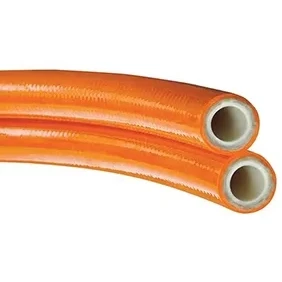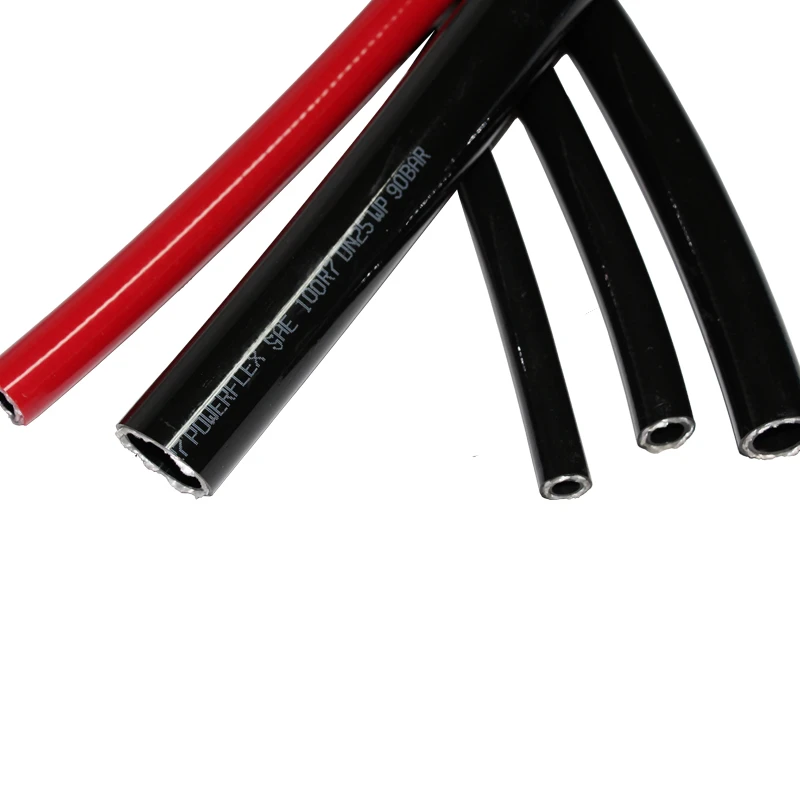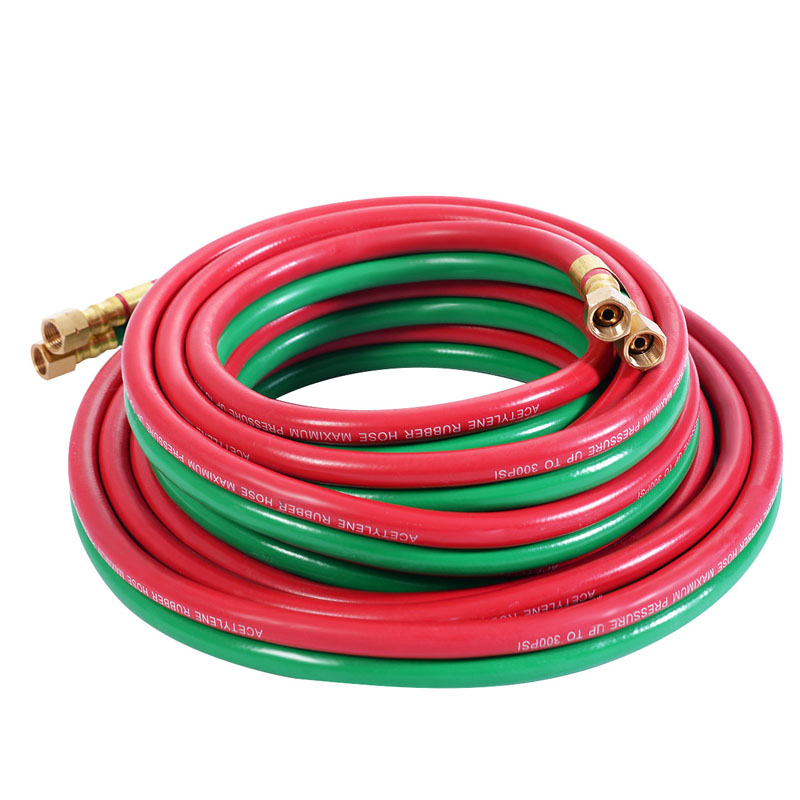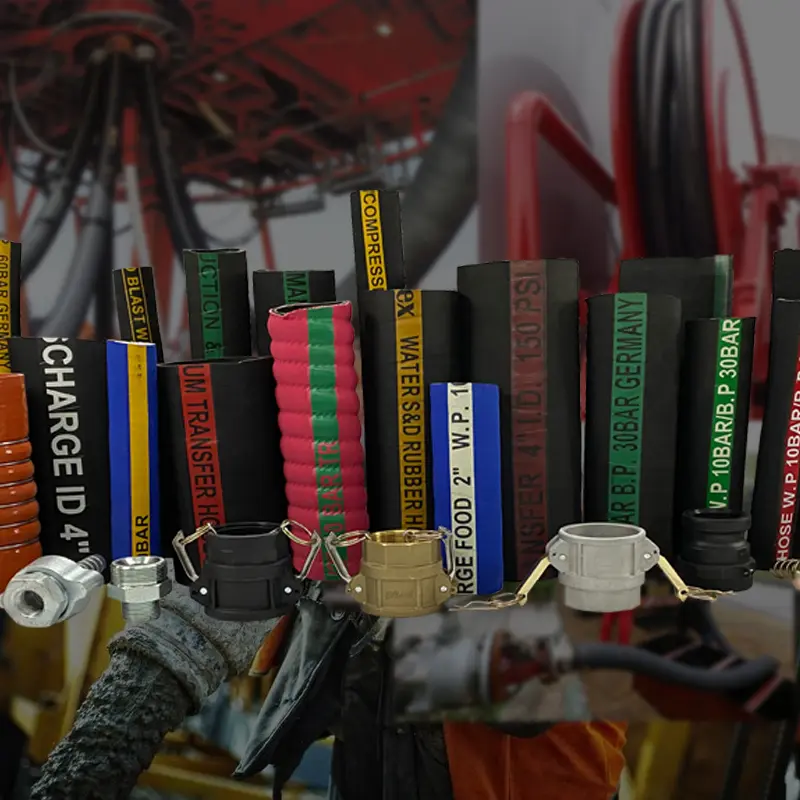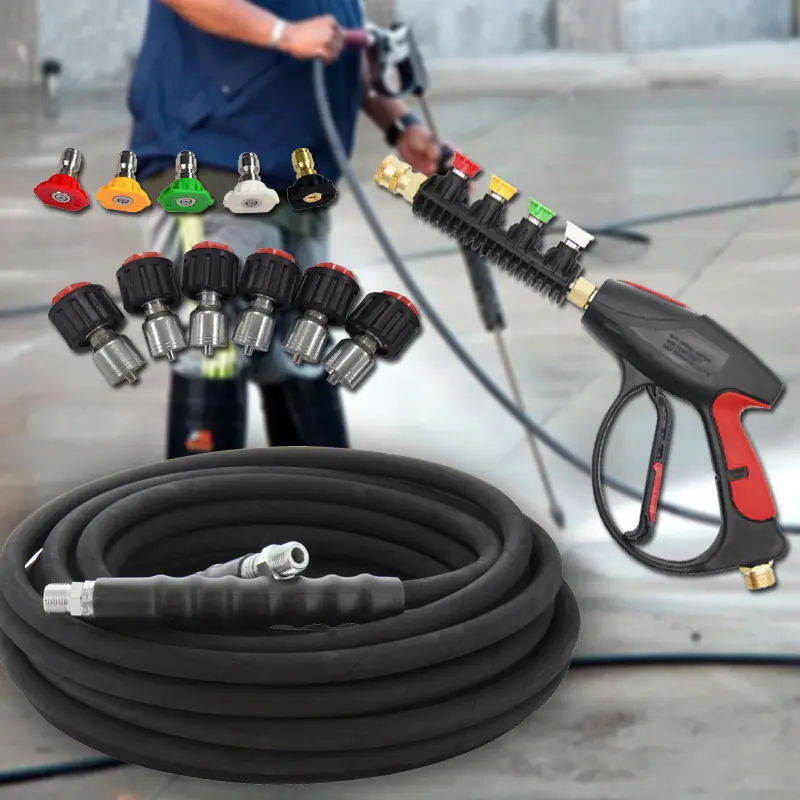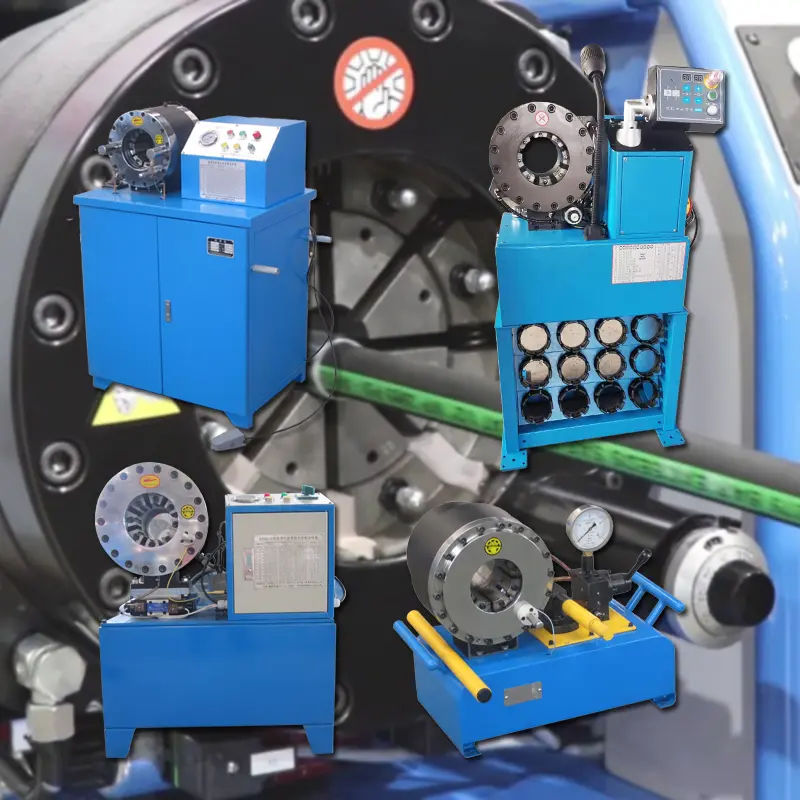Choosing the correct high pressure hydraulic hose for your hydraulic system is vital to ensure safety, performance, and longevity. Hydraulic hoses transfer hydraulic fluid under pressure, so selecting the wrong hose can cause system failures, leaks, or even accidents. There are several critical factors to consider before buying a hose.
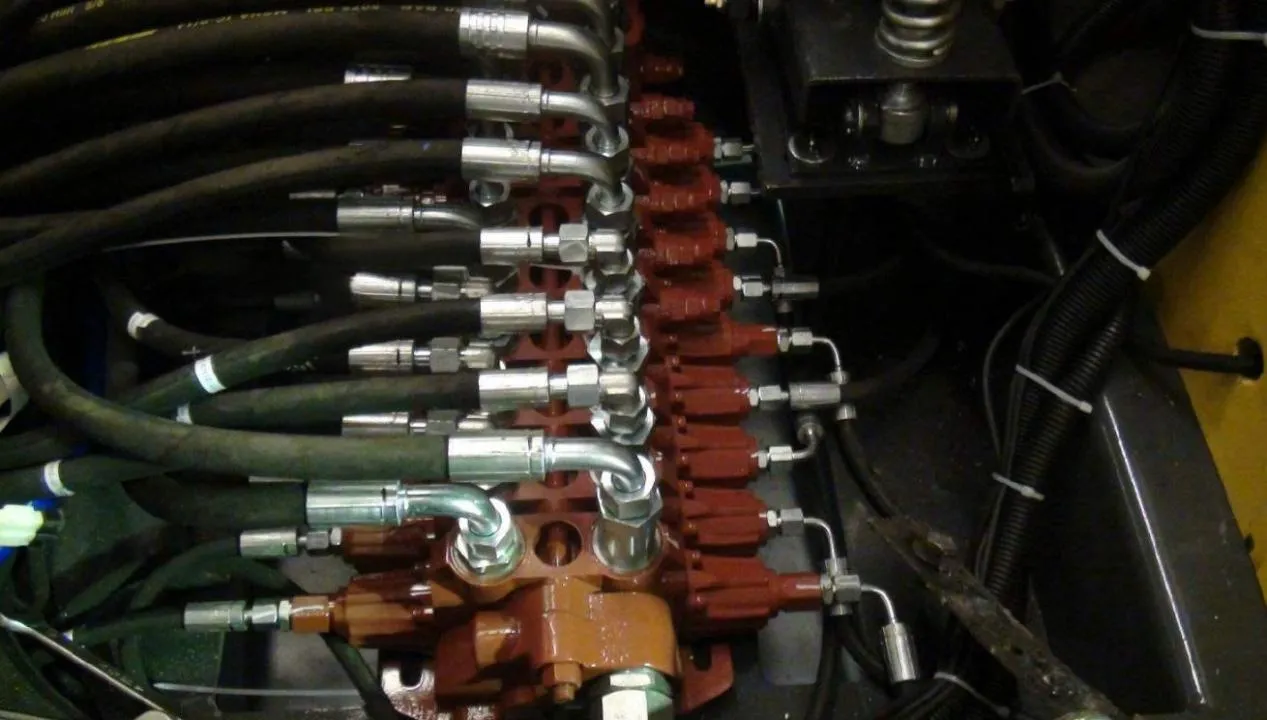
Working Pressure:
The most important specification is the working pressure or operating pressure the hose must withstand. Always choose a hose with a pressure rating higher than your system’s maximum pressure, including pressure spikes or surges. For example, if your system operates at 3000 psi, select a hose rated for at least 3500 psi or more to provide a safety margin. Exceeding the pressure rating can cause hose bursts or damage.
Temperature Range:
Hydraulic hoses are exposed to varying temperatures during operation. The hose material must tolerate your system’s minimum and maximum temperatures without degrading or losing flexibility. For example, synthetic rubber inner tubes perform well at temperatures from -40°C up to 100°C or higher depending on the compound used. If your system operates in extreme cold or heat, verify that the hose materials are suitable for those conditions.
Fluid Compatibility:
Hydraulic fluids vary widely, including mineral oils, water-glycol fluids, phosphate esters, and synthetic fluids. The inner tube material of the hose must be chemically compatible with the fluid to prevent swelling, cracking, or leaks. Synthetic rubber, nitrile rubber, and thermoplastics like PTFE are commonly used depending on the fluid type. Always consult hose specifications or your hydraulic hose manufacturer to confirm compatibility.
Environmental Conditions:
The outer cover of the hose must protect against abrasion, UV radiation, ozone, chemicals, and physical wear. For hoses used outdoors or in harsh environments like construction sites, look for abrasion-resistant and weather-resistant covers. If hoses rub against sharp edges or are exposed to oils or solvents, an appropriate protective cover is critical to extending service life.
Fittings and Connections:
Hose ends and fittings must match your system’s ports exactly. Poorly matched or low-quality fittings can cause leaks, pressure loss, or premature failure. Common fitting types include JIC, NPT, ORFS, and BSP. Ensure fittings are tightened correctly according to manufacturer specifications—over-tightening can damage threads or seals, while under-tightening can cause leaks.
Length and Routing:
Buying the correct hose length is crucial. Too short hoses cause tension and may pull fittings loose, while excessively long hoses can kink or twist, reducing flow and damaging the hose. Leave enough slack to accommodate movement, vibration, and thermal expansion, but avoid sagging. Plan the hose routing carefully to avoid sharp bends and to secure hoses with clamps or brackets to reduce vibration and wear.
By carefully considering working pressure, temperature, fluid type, environment, fittings, and length, you can select a high pressure hydraulic hose that ensures safe and efficient system operation.
Why Hydraulic Hose Size Matters
Determining the correct size of a high pressure hydraulic hose is essential for system efficiency and longevity. Hose size mainly refers to the inner diameter (ID), which affects flow rate and pressure loss.
Flow Rate and Velocity:
The hose size should accommodate the maximum flow rate of your hydraulic system without excessive velocity that can cause noise, turbulence, and pressure drop. Hydraulic fluid velocity in hoses is generally recommended to stay between 3 to 9 feet per second (fps). Exceeding this can cause damage to the hose and system components.
Pressure Rating vs. Size:
As hose diameter increases, pressure ratings usually decrease for the same construction type. Larger diameter hoses tend to handle lower pressure because thicker walls or additional reinforcement are required to maintain pressure strength. Always verify that the hose you select supports your system’s pressure at the desired size.
Bend Radius and Installation Space:
Hoses must be able to bend without damage. Smaller hoses generally have tighter minimum bend radii. If space is limited, you may need a smaller diameter hose with greater flexibility or use fittings that reduce bending stress.
Standard Hose Sizes:
Hydraulic hoses are available in standard sizes, commonly measured in inches or millimeters. For example, typical sizes include 1/4", 3/8", 1/2", 3/4", and 1". Choosing a standard size matching your equipment ports simplifies installation and reduces costs.
Consult Experts:
Because hydraulic systems vary widely, consulting a mobile hydraulic hose repair specialist or experienced hydraulic hose manufacturer is recommended to calculate the correct hose size based on flow, pressure, and system design. They can also recommend hoses that comply with industry standards like SAE, ISO, or DIN.
Installation Tips and Cost Considerations for High Pressure Hydraulic Hoses
Proper installation of hydraulic hoses is critical for safety and performance. Mistakes during installation can lead to premature hose failure, leaks, or safety hazards.
Correct Length and Slack:
When installing, ensure the hose has sufficient length with some slack to absorb movement and vibration. Avoid overstretching or tight bends that can cause stress on hose materials and fittings.
Routing and Bend Radius:
Follow manufacturer recommendations for routing. Avoid sharp bends and twisting, as these can weaken the hose structure. Using bend restrictors or protective sleeves helps maintain integrity where tight bends are unavoidable.
Securing the Hose:
Use clamps or brackets to secure hoses and reduce vibration. This prevents rubbing against surfaces that cause abrasion damage.
Fittings:
Always use fittings compatible with the hose and system ports. Tighten fittings to manufacturer specs—over-tightening can damage threads, under-tightening causes leaks.
Inspection and Maintenance:
Regularly inspect hoses for signs of wear, abrasion, kinks, cracks, or leaks. Replace damaged hoses promptly to avoid system failure.
Hydraulic hose price and hydraulic hose cost per foot vary based on hose type, materials, reinforcement, and customization. While lower-cost hoses may seem attractive, investing in higher-quality or custom made hydraulic hoses often saves money by reducing downtime and replacement frequency.
Custom hoses allow specification of length, fittings, and reinforcement types, perfectly matching your system needs and avoiding waste or mismatches.
Why Choose Custom Made Hydraulic Hoses?
Custom made hydraulic hoses provide flexibility unmatched by standard hoses. Tailoring hose length, diameter, pressure rating, reinforcement, and fittings means the hose fits your exact application, improving safety and efficiency.
Custom hoses reduce installation errors, avoid unnecessary hose length or excessive fittings, and often comply better with your hydraulic system manufacturer’s requirements. For specialized machinery or harsh environments, custom hoses offer materials or constructions designed for longer life and reliability.
Partnering with a trusted hydraulic hose manufacturer guarantees expertise in selecting materials and designs that meet international standards and industry best practices.
FAQs About High Pressure Hydraulic Hoses
What factors determine the working pressure of a hydraulic hose?
Working pressure depends on hose construction, reinforcement type (braided vs spiral), materials, and manufacturer testing. Always select hoses rated above your system’s maximum pressure.
How do I know the hose material is compatible with my hydraulic fluid?
Consult the hose manufacturer’s chemical compatibility charts or ask for expert advice to ensure the inner tube resists your fluid without swelling or degradation.
What is the average lifespan of a high pressure hydraulic hose?
Lifespan varies based on usage, environment, pressure cycles, and maintenance. Proper installation and regular inspections can extend hose life to several years.
Can I repair a damaged hydraulic hose or should I replace it?
Minor damage may be repairable with hose assemblies or fittings by a professional. However, significant wear, cracks, or leaks usually require full hose replacement for safety.
Why is proper hose installation so important?
Incorrect installation causes stress points, leaks, or burst failures. Proper length, routing, securing, and fitting torque ensures safety, performance, and long service life.
Choosing the right high pressure hydraulic hose affects the safety and efficiency of your hydraulic system. By considering working pressure, temperature, fluid compatibility, environment, fittings, size, and installation, you ensure optimal performance and durability.
Our company offers a wide range of custom made hydraulic hoses, competitively priced with expert guidance. Whether you need standard sizes or tailored solutions, our team is ready to help with your hydraulic hose needs. For professional advice or to request a quote, visit our website or contact our experts today. Trust us for durable, reliable hoses that keep your systems running smoothly.
Product Application











